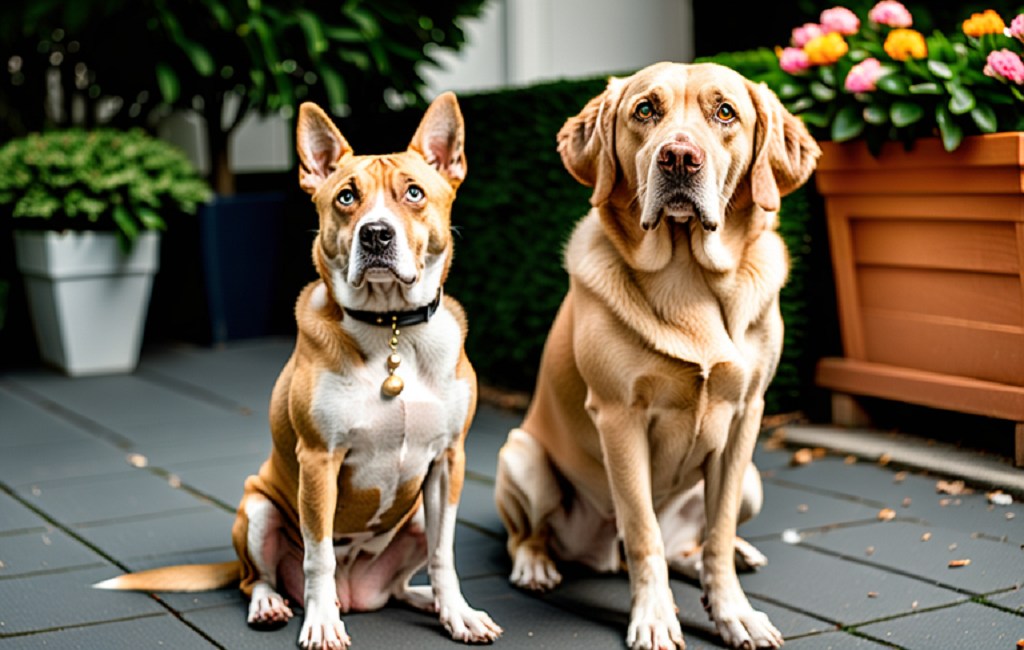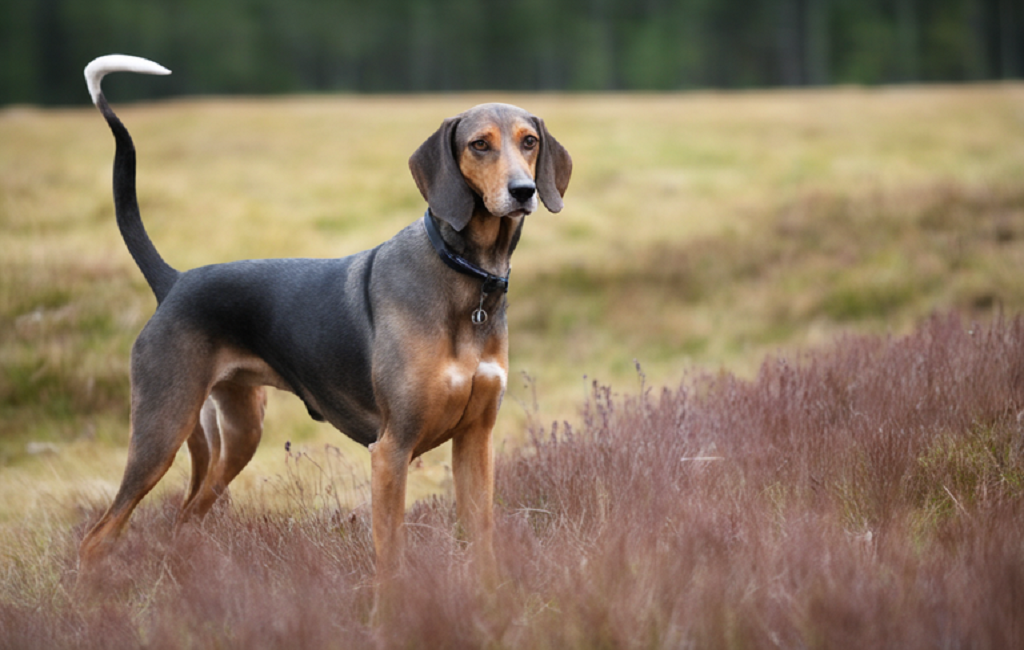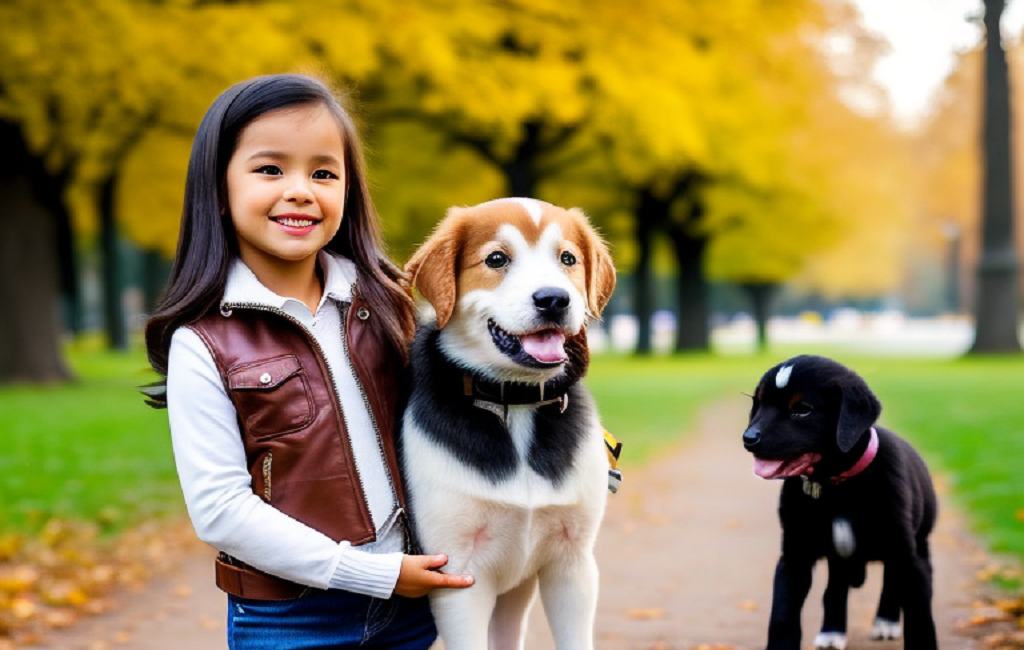Are you happy to have a mixed breed dog? Then get ready for an exciting trip where you will train and bond like never before!
Congratulations on reading “The Ultimate Guide: How to Train Your Mixed Breed Dog.” This detailed guide will give you all the information and tips you need to train your unique dog, whether it’s part labrador, part poodle, or a mysterious mix of breeds. Join us as we bring out the best in your four-legged friend, from figuring out their unique traits and habits to finding the best ways to train them that are made just for them. Get ready to see amazing changes and heartwarming success stories.
A look at mixed-breed dogs and how they should be trained
Mixed breed dogs, which are also called “mutts” or “designer dogs,” are becoming more and more popular among dog owners. These cute puppies are a mix of two or more breeds, and their looks and behaviors are often very different from those of other dogs of the same breed.

Training is very important for mixed breed dogs, just like it is for any dog. But because their genes aren’t all the same, they might need different training than purebred dogs. This part will talk about the basics of mixed-breed dogs and look at how to train them properly.
Knowing What Mixed-Breed Dogs Are Like on the Outside
One important thing to keep in mind when teaching a mixed-breed dog is that each dog has its own style. Purebred dogs tend to have traits that are similar to other dogs of the same breed. Mixed breed dogs, on the other hand, are all different and can get traits from both of their parents.
Others may have the same amount of traits from both parents, while others may have traits from only one parent. Because each mixed-breed dog is different, it can be hard to guess what habits or traits it might show.
If your mixed breed dog comes from two high-energy parents, like a Border Collie and an Australian Shepherd, you can expect them to be busy and need a lot of exercise. If you don’t know much about your dog’s background or have a mix of breeds, on the other hand, watching how they behave closely can help you figure out what kind of training will work best for them.
How to Train a Mixed-Breed Dog
As we already said, mixed-breed dogs may need different training than purebred dogs. When raising your mixed-breed dog, here are some important things to keep in mind:
- Socialization: All puppies need to be socialized early on, but mixed breed pups need it even more because they may get both good and bad traits from their parent breeds. Getting them used to different people, animals, and places when they are young can help them become confident and well-adjusted adults.
- Individualized training: Because every mixed-breed dog is different, they may need a different way of being trained. Some dogs may do better with treats, while others might do better with praise or play as a prize for good behavior. It’s important to watch your dog and change how you train him or her as needed.
- Teaching methods: As with all dogs, mixed breeds do best when their daily practice and teaching methods are always the same. Setting clear rules and limits from the start will help keep things from getting confusing and cause behavior problems in the future.
- Mental stimulation: A lot of mixed-breed dogs are very smart and need mental stimulation as well as physical exercise. Keeping them busy with puzzle toys or agility classes can keep their minds sharp and keep them from getting bored.
- Patience: Because they have traits from different breeds, mixed breed dogs may take longer to understand some training ideas. Because every dog learns at a different speed, you need to be gentle and consistent in how you train them.
Overall, mixed breed dogs can be great pets, but because their genes are from different breeds, they may need different training than other dogs. When training your mixed-breed puppy, you can help it reach its full potential and become a well-behaved family member by knowing its unique traits and changing your methods to fit them.
Learn about your dog’s unique personality and traits
It’s no secret that each dog has its own attitude and set of traits. The same is true for dogs of different breeds. Even though they don’t have to follow a strict breed standard, they usually have traits from all of their parent types. This can make it hard and fun to figure out your mixed-breed dog’s attitude and traits.

So, how do you find out what your pet friend’s odd habits, behaviors, and tendencies are? First, you need to pay attention and take the time to get to know your dog as a person.
The first thing you should remember is that each dog is unique and should be treated separately. Some behaviors or traits are more popular in certain breeds than others, but that doesn’t mean your mixed-breed dog will show them.
It is true that breeds do have a big impact on how a dog acts and behaves. So, understanding what breeds are in your mixed-breed dog can help you guess what kind of behavior they might have.
If you got your mixed-breed dog from a shelter or rescue group, they may have done DNA tests or given you information about the possible breeds. In that case, you can always use physical traits like size, hair type, and color patterns to help you narrow down the possible parent breeds.
Checking out your mix-breed puppy’s behavior in different situations is the next step once you know what kinds are in their DNA. Spend some valuable time with your dog at home and watch how they play with other dogs, people, and things. Also, pay attention to how active they are, how they react to orders, and if they have any habits, like chasing birds or gathering things together.
Going on walks with your dog in different places can also help you learn more about their behavior and traits. How do they act when they go to the dog park? Do they get scared when they meet new people or dogs? In what situations are they more shy or outgoing?
It’s important to remember that a dog’s attitude can change as they get older and live in different places. When it comes to your mixed-breed dog, you should always be ready to learn more about them as they grow and change.
Always keep an open mind, love, and understanding when you’re getting to know your dog. Dogs are complicated beings with their own personalities, just like people. So enjoy getting to know all of your mixed breed friend’s quirks and idiosyncrasies.
Why setting up a training schedule is important
Getting your mixed-breed dog into a training routine is very important for their mental and physical health. A regular training plan will not only help them behave better, but it will also make the bond between you and your pet friend stronger.
- Sets a Routine: Dogs are very habitual and do well with routines. Their training is planned out so that they know what to expect and when to expect it. This makes them feel safer and more in charge, which can make them quieter and better behaved.
- As part of your dog’s training: You should teach it basic orders like “sit,” “stay,” “come,” and “heel.” These orders help you set limits and rules for how your dog should behave. Your dog will behave better if you practice these orders over and over again during training lessons.
- Keeps your dog’s mind active: Just like people, dogs need mental activity to stay healthy and happy. Your dog’s mind will stay sharp because a well-established training routine forces them to learn new things and figure out how to fix problems.
- It takes time and care to train your dog: But it also helps you and your dog trust each other. It takes time for your dog to learn to trust you as their boss and giver. Together, this makes a strong bond between you two.
- You keep your dog physically fit: Regular training sessions give your dog both mental and physical exercise. Your dog will be able to keep a healthy weight and fitness level depending on the types of activities they do as part of their training, like obedience or agility.
- Allows for Bonding Time: Training classes give you and your dog time to spend alone together, so you can focus on them only. Giving your dog this much undivided care helps you and your dog become close.
- Trains Your Dog for Real Life: A well-trained dog is better prepared for real life situations like meeting other animals, people, and things that didn’t go as planned. Your dog will learn how to behave in these scenarios if you train it to follow directions regularly.

In general, giving your mixed-breed dog a regular training schedule is very important for their health. It gives them order, encourages good behavior, keeps them mentally and physically active, builds trust, and makes the bond between you and your pet friend stronger. Start making a training plan for your dog right now—he will thank you!
Simple commands for training mixed-breed dogs
Mixed breed dogs can be great pets, but they need to be trained properly just like any other dog to make sure they behave well and get along well with their owners. Any dog, no matter what breed or background, needs to learn basic rules. You will be the boss and your dog will be the follower after you give these instructions. They will also help you talk to your mixed-breed dog better.
This is a list of simple directions that every mixed breed dog owner should teach their dog:
- Sit
One of the most basic and useful skills you can teach your dog is to sit when you say “sit.” At different times, like when you’re meeting friends or eating, you can use it. Hold a treat close to your mixed-breed dog’s nose and slowly move it up to their face to teach them to sit. Their bottom will easily drop into a sitting position as their head follows the treat. Say “sit” and give them the treat as soon as they do.
- Stay
The “stay” order teaches your mixed-breed dog to be responsible and follow rules. First, get your dog to sit in front of you. Then, tell them to “stay” while holding up one hand as a stop sign. As you slowly move away from your dog, look them in the eyes. If they start to follow you, gently move them back to where they started sitting. Don’t say anything or act angry until they know what you want them to do.
- Come
It is very important to teach your mixed breed dog to come when you call them. This will keep them safe and give you control over their moves. Start by putting a leash on your dog. Then, say “come” and slowly pull the line toward you. When they get to you, give them treats and praise. As your dog gets better at this order, slowly move farther away from you.
- Down
You can use the down order to teach your mixed-breed dog to lie down when you want them to. This can help them stay calm or relax. First, get your dog to sit in front of you. Then, hold a treat close to their nose and slowly lower it between their paws to the ground. As soon as they eat the food, their body will easily fall asleep. Say “down” and give them the treat as soon as they are sitting down.
- Just forget about it
Your mixed-breed dog will learn not to touch or pick up something that is off-limits when you say “leave it.” This can be very important for safety reasons. With one hand, hold out a treat. With the other, show them something less appealing, like a toy or food. You should tell them “leave it” and wait for them to look back at you before giving them the treat.
- Put it down
Your mixed-breed dog needs to know the “drop it” order so they can put something down when you tell them to. Show them the thing with one hand while holding a treat or toy in the other. Say “drop it” and gently open their mouth. When they let go, praise them and give them the treat.

Always keep in mind that teaching takes time and consistency, so be patient and use positive rewards like love, treats, and praise. Your mixed-breed dog will learn these basic directions quickly and easily with practice and care. This will make your dog a well-behaved and happy pet.
How to Deal with Common Behavior Problems in Mixed Breed Dogs
When it comes to personality, mixed-breed dogs are one of a kind. However, they can also have similar behavior problems that may need extra training and care. This part will talk about some of the most common behavior problems mixed-breed dogs may have and give you some good ideas on how to deal with them.
- Stress about being apart
Anxiety about being alone is a behavior problem that happens a lot in mixed breed dogs. This could show up in many ways, including yelling too much, destroying things (like chewing on furniture or digging), or even physical signs like running and sweating.
If your mixed-breed dog is showing signs of separation anxiety, you should first talk to your vet to make sure there aren’t any other health problems going on. After taking care of any possible health problems, here are some ways to deal with separation anxiety:
- Increase alone time slowly. If you have never left your dog alone for a long time, start by leaving them alone for short amounts of time (5–10 minutes), and as they get used to it, increase the time.
- Make a safe area: Give your dog a certain spot to go when you’re not home. They could be in a box or a room where they feel safe and at ease.
- Leave comfortable things behind. To make your dog feel better, leave them toys or other things that smell like you.
- Practice calm goodbyes and arrivals: when you leave or return home, don’t make a big deal out of your entries or exits. Keep things quiet instead so your dog doesn’t get too scared or excited.
- Please get professional help. If your dog has significant separation anxiety, it might be best to get help from a professional dog trainer or behaviorist.
- Feeling nervous or scared
Mixed-breed dogs can get different attitudes and temperaments from their different breeds. This can make them nervous and scared at times. This can show up in a lot of different ways, such as being afraid of people or other dogs, hiding, shrinking, or acting aggressively.
To help your mixed-breed dog feel less nervous and scared:
It’s important for all dogs to be socialized properly, but it’s especially important for mixed-breed dogs that may not have been around as many people or situations as purebred dogs. In a good and controlled way, slowly introduce your dog to new places, sounds, sights, and smells.
– Stay calm: Dogs can tell when their owners are upset, so try to keep your cool when you’re with your scared or nervous dog.
– Use positive feedback. Give treats and praise to kids who are calm and sure of themselves. This will help you and your dog trust each other.
– Get professional help: If your dog’s fear is getting in the way of their daily life, talk to a dog trainer or behaviorist who can make a training plan just for your dog.
- Reactivity on a Leash
When a dog on a leash sees other people or dogs, it can get too excited, nervous, or violent. This is called leash anxiety. Mixed-breed dogs may do this a lot because it’s something they got from one of their parent types.
To stop your mixed-breed dog from pulling on the leash:
– Teach basic obedience: Knowing basic directions like “sit,” “stay,” and “heel” can help you get control of your dog again when they act up on walks.

– Stay away: If your dog gets upset when they see other dogs on walks, try taking them at times when there are fewer dogs around. Slowly introduce them to other calm, well-behaved dogs to help them form good memories.
– Use positive reinforcement: give treats and praise for good behavior. This will teach your dog what you expect of them and help them behave well.
– Get help from a professional: If your dog’s leash pull is bad or risky, you should get help from a professional dog trainer or behaviorist.
- Keeping resources safe
When a dog gets protective and/or violent over certain things, like food, toys, or even their owner’s attention, this is called resource guarding. This is a habit problem that many mixed-breed dogs have, especially if one of their parent breeds is known to do it.
To stop your mixed-breed dog from digging up things:
- Talk to your vet. Before you try to stop your dog from resource guarding, you should make sure there aren’t any health problems going on that could be making him act out.
- Start early: If you have a baby or a dog that you just got, teach it from the start not to see things as things to guard.
- Teach your dog that if you give up something valuable, you will get something equally (or even more) valuable in return.
- Don’t punish your dog. If your dog is resource guarding, punishing them can make the problem worse. Instead, get help from a professional teacher who can tell you how to handle the situation in a safe and effective way.
It’s important to remember that each mixed-breed dog is different and may need a different way to deal with behavior problems. Key parts of good teaching are patience, stability, and positive feedback. If your dog is having any of these problems, don’t be afraid to get help from a professional teacher or behaviorist to make sure the best result for your dog.
How to Train a Well-Behaved Mixed Breed Dog More Advanced
That being said, there is no one right way to train a mixed-breed dog. Each dog is different, so they may react to different methods in different ways. The good news is that there are more advanced training methods that can help your mixed breed dog behave well and follow your commands. We will talk about these techniques and how they can be used with your pet friend in this part.
- Positive reinforcement training is a way to teach your dog good behavior by giving it treats, praise, or love. It focuses on making the behavior you want and the prize go together in a good way. You could give your mixed-breed dog a treat every time they do what you ask them to do, like that. This will help them learn how to sit on order. Over time, they’ll learn that sitting means getting a treat, which will make them more likely to do it again.
- Clicker training is another type of positive reward. You use a clicker to talk to your dog during clicker training. The clicker makes a clear sound that lets you know right away when you’ve done something good, like getting treats or prizes. This method helps quickly and effectively reinforce good behavior.
- You can help your mixed-breed dog deal with fears and anxiety by desensitizing and counterconditioning him or her to things or situations that scare or bother them, like loud noises or strange people. With this method, you slowly expose your dog to the thing it’s afraid of while also giving it something fun, like treats or playing, to make a good connection with it.
- Target Training: You can teach your dog more complicated orders and tricks with target training. You teach your dog to touch a goal (like your hand or a toy) with a certain part of their body, like their nose or leg. Once they know how to do this, you can use the target item to teach them more difficult skills, like how to walk in a certain way or jump through hoops.
- Leash-Training: You might want to try leash-training methods if your mixed-breed dog pulls on the leash or has trouble crossing the street quietly. To do this, you need to teach your dog how to walk nicely on a leash without pulling or lunging. “Heel” and “leave it” are techniques that can help your dog behave well on a leash.
- Stick with it: Consistency and determination are important no matter what kind of training you use. Dogs need habit and repetition to be happy, so it’s important to stick to the training methods you choose and wait for your dog to improve. They might need some time to get used to new habits, but being consistent will help them in the long run.

- Get Professional Help: If you’re having trouble with certain habits or think you need more direction, don’t be afraid to get help from a qualified dog trainer or behaviorist. They can figure out what your dog needs and make training plans that will help with any behavior problems.
Don’t forget that each dog is unique and what works for one might not work for another. Be patient, train often and for short periods of time, and always end on a good note. Your mixed-breed dog can learn new tricks and become a well-behaved friend if you work at it and are patient.
How to Stay Consistent and Keep Your Dog Motivated While Training
That being said, training your dog can be both fun and hard. One of the hardest things for many pet owners is staying consistent and motivated during training lessons. Dogs, like people, need order and habit, but if they aren’t driven enough, they can get sidetracked or lose interest in training.
These problems can make it hard to train your mixed-breed dog, but here are some tips to help you stay consistent and keep your furry friend motivated:
- Set a pattern. Dogs are very good at following through with plans because they are creatures of habit. Each day, set a specific time to train your dog. It’s best to do this after it has slept and been active. This will not only help you keep to a regular training plan, but it will also help make sure that your dog is alert and focused during the lessons.
- Use positive feedback. One of the best ways to keep your dog motivated while you train it is to use positive praise. In this method, you give your dog with things like treats, praise, or playtime whenever it does what you want it to do. This will not only make them more likely to do it again, but it will also make them feel good about training.
- Fun and short: Training should happen often (at least once a day) and be short (about 10 to 15 minutes). This will keep your dog interested throughout the process and keep them from getting bored or stressed out during long lessons. You should make these training lessons fun by adding games or tricks. This will keep your dog interested in learning new things.
4 . Keep at it: If you want to train your dog, you need to be steady. When you talk to your dog, use the same words and hand signals each time. This will help them understand what you want from them. You should also be patient and not get mad if your dog doesn’t get it right away. As with people, dogs learn at their own pace. Be steady, and they will get it in the end.
- Switch things up. Dogs get bored quickly if they think they are doing the same thing over and over. Change things up by giving your dog new tasks and challenges during training sessions to keep them interesting. This will not only keep them interested, but it will also help them use what they’ve learned in new ways.
- As a general rule, treats are the best prize for training, but they shouldn’t be the only one you use. As a treat for good behavior, give them praise, time to play with their favorite toy, or the chance to sniff around. This will keep your dog from becoming too reliant on treats and give them different kinds of praise to keep them engaged.
- Think about the dog’s attitude. Each dog is unique, so what works for one might not work for another. You should think about what drives your dog the most and how they act. Some dogs may be more interested in food, while others may be more interested in play or praise. Find out what helps your dog the most and use that when you’re teaching him.

If you want to train your dog, remember that consistency is key. Do not give up, even on days when you feel like it. You can stay consistent and keep your dog motivated while they are training if you are patient, use positive reinforcement, and get creative.
More Helpful Links for Training Your Mixed Breed Dog
Training a dog of more than one breed can be fun and hard at the same time. Because these dogs come from different places and have different genes, they may need different teaching methods than purebred dogs. You can find a lot of information to help you train your mixed-breed dog. These are some more tools that can help you with your training.
- Professional Trainers: A professional trainer is one of the best ways to figure out how to train any dog. They know how to figure out what your dog needs and how to train him in a way that meets those needs. There are also good ways to deal with problems that might come up during the training that a professional teacher can guide you through.
- Online Classes: Thanks to modern technology, you can now take classes to train your dog online, from the comfort of your own home. These classes teach everything from simple orders for behavior to more complex skills like rehab work or agility. Some websites even have classes just for mixed-breed dogs, taking into account their unique traits and features.
- Books and e-books: There are a huge number of books and e-books on dog training, some of which are specifically written for mixed-breed dogs. There is often useful information in these sources about how to understand your dog’s behavior, how to talk to your dog effectively, and how to do different kinds of training tasks step-by-step.
- YouTube Channels: A lot of experienced dog trainers share what they know on YouTube channels that are just for dog training. These movies not only show you how to do things and give you useful tips, but they also show you how certain techniques work with real dogs of different kinds and personalities.
- Local Training Classes: You might want to sign up your mixed-breed dog for a local training class. You can work with a professional trainer in person and get your dog used to being around other dogs at these classes. Plus, you’ll get help and support from other owners who are having the same problems.
- Websites that focus on specific breeds: Some mixed breeds may have more traits from some breeds than others, so it’s helpful to learn about those breeds and how to train them. The American Kennel Club’s (AKC) “Dog Breeds” page and other websites like it have useful information about each breed, such as how much exercise and training they need.
Finally, the best resources for your mixed-breed dog will depend on their specific needs and traits. During the training process, be patient, consistent, and positive, and don’t be afraid to ask for help if you need it. If you train your mixed breed dog right, it will be a happy and well-behaved pet for many years.
Finally, celebrating the bond between you two
You have trained your mixed-breed dog for a long time and have been patient and hardworking. Now it’s time to celebrate your bond with your dog. Thanks to your hard work, your furry friend has become a loyal and well-behaved friend. You’ll feel so proud of how far your dog has come when you think about the journey you’ve been on together.
You have not only taught your mixed-breed dog to be well-behaved and obedient, but you also have a strong bond with them that you trust. Positive reinforcement works great for dogs, and by using it consistently during training, you have not only taught them new skills but also made the bond between you and your dog stronger.
People and their dogs have a special bond because they love each other no matter what and are always there for each other. Even though mixed breed dogs don’t belong to just one breed, that doesn’t mean they don’t deserve love and attention. You might even find them more lovable because they have traits from many different breeds all in one furry package.

It’s important to remember that training your mixed-breed dog never ends as you spend time with it. People need to keep learning new things and keeping old ones up to date, and dogs need to keep practicing the things they are taught. You need to be consistent and do what works best for both of you.
When you train your dog regularly, you and your dog can talk to each other better. You’ll learn more about their needs and wants through their body language, and they’ll also get better at reading your cues and following your commands. This trust and understanding makes the bond between you and your furry friend stronger in the long run.
As you celebrate your relationship, think about how far you have come together. Enjoy how different your mixed-breed dog is, and keep building your relationship with it through love, patience, and praise. Though the training process never really ends, remember that each step forward brings you and your four-legged friend closer together.
